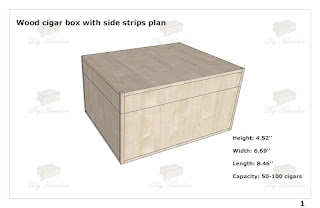Asian-Inspired Furniture Plans for Minimalist and Stylish Decor
Embrace the serenity and sophistication of Asian design with these furniture plans, perfect for crafting a minimalist and stylish home. We'll explore how to blend traditional Asian aesthetics with contemporary clean lines, resulting in pieces that are both functional and visually stunning. Forget generic mass-produced furniture; these plans empower you to create unique pieces reflecting your personal style and adding a touch of Eastern tranquility to your space.
Low-Profile Platform Beds: The Foundation of Tranquility
A low-profile platform bed forms the cornerstone of many Asian-inspired bedrooms. Its understated elegance immediately sets a calming tone. Instead of a bulky headboard, consider a simple, upholstered panel in a natural linen or a subtly patterned fabric inspired by traditional Asian textiles. Functionality meets simplicity with built-in drawers for storage beneath the platform, maximizing space while maintaining a clean aesthetic. The construction utilizes sturdy wood, perhaps sustainably sourced bamboo or reclaimed teak, for a robust yet environmentally conscious choice. Simple joinery techniques, like mortise and tenon, enhance the piece's inherent beauty and reinforce its minimalist design.
Constructing the Platform: A Step-by-Step Guide
Start by building a sturdy frame using 2x4s or similar lumber. Cut the pieces to your desired dimensions, ensuring accurate measurements for a perfectly aligned structure. Secure the frame with wood screws and joinery for maximum stability. Attach slats made from wood or sustainably harvested bamboo to the frame to support the mattress. Finally, apply a natural finish – a clear sealant or a light stain – to highlight the wood's grain and protect it. Remember to leave adequate space between the slats for air circulation.
Sleek and Simple Side Tables: Balancing Form and Function
Side tables are often overlooked, but they play a crucial role in establishing the overall aesthetic. Choose a simple, geometric design for a minimalist approach. Consider a square or rectangular top supported by a single, slender leg or a set of elegant, tapered legs. Incorporate natural materials like bamboo, rattan, or light-colored wood to reinforce the Asian theme. A clean, unadorned surface provides a perfect platform for a minimalist display: a single vase of flowers, a carefully chosen book, or an intriguing sculpture. The simplicity of the design allows the beauty of the materials to shine through.
Material Selection and Finishing Techniques
Opt for high-quality wood known for its durability and beautiful grain, like cherry or maple. Alternatively, explore the versatility of bamboo, which offers both strength and a distinctive aesthetic. Sand the wood thoroughly before applying a clear finish to maintain the natural color and showcase the wood's texture. A final coat of sealant protects the surface from everyday wear and tear.
Floating Shelves: Maximizing Space and Adding Visual Interest
Floating shelves offer a practical and visually appealing way to add storage without cluttering the space. These shelves seamlessly integrate into a minimalist aesthetic, maintaining a clean and uncluttered look. Keep the design clean and simple, using a single, continuous piece of wood or bamboo. Install hidden brackets for a truly floating effect, and strategically place the shelves to highlight key decorative items or books. Use contrasting finishes – such as a dark wood against a lighter wall – to enhance visual appeal and create a focal point. These shelves can be easily customized to suit your needs and space constraints.
Installation and Safety Precautions
Before installation, carefully measure and mark the wall locations for the shelf brackets. Use appropriate wall anchors suitable for the type of wall material to ensure secure and stable mounting. Always follow the manufacturer's instructions for the chosen brackets. Once installed, test the stability of the shelves by gently placing weight on them before loading them with decorative items or books.





















